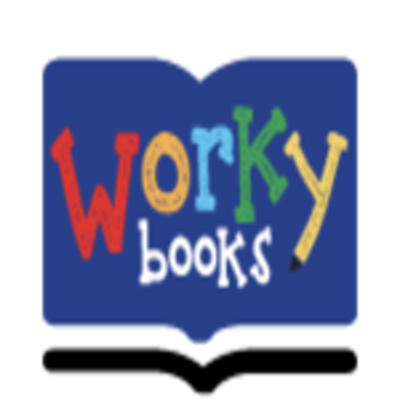Literal and Nonliteral Language Made Easy: Activities for Grade 3 Learners
 Workybooks
WorkybooksUnderstanding how language can be both direct and figurative is a critical part of developing strong reading and communication skills. In third grade, children begin encountering idioms, metaphors, and expressions in stories and conversations. That’s where literal and nonliteral language comes in—a key concept for helping young learners make sense of what they hear and read. To strengthen this skill, well-designed worksheets offer structured support through engaging and grade-level-appropriate activities.
Defining the Concept: What’s Literal and What’s Not?
Literal language refers to words and phrases that mean exactly what they say. For example, “She is running fast” clearly communicates the action. Nonliteral language, on the other hand, goes beyond the surface. Phrases like “She’s on fire today” use figurative meaning—indicating great performance, not that she is literally burning.
Learning this distinction helps children think critically and read between the lines. It’s also a major part of English Language Arts in third grade and aligns with standards such as CCSS.ELA-LITERACY.L.3.5, which encourages students to interpret and understand figurative language.
Practical Learning: Why Worksheets Work
Incorporating worksheets into daily learning routines supports both understanding and application of new concepts. Through reading practice, vocabulary building, and creative expression, students learn to identify and apply both literal and nonliteral meanings in various contexts.
Worksheets also give teachers the flexibility to assess comprehension, assign targeted practice, and engage students with interactive tasks. From sentence matching to mini-stories, these resources can turn language learning into an exciting adventure.
Types of Figurative Language Activities for Students
To help students grasp literal and figurative language, a variety of worksheet types can be used. These formats are ideal for classroom use, homework, or homeschooling.
Matching Words to Their Meaning
Students match nonliteral expressions—like “spill the beans” or “hit the books”—to their literal counterparts. These exercises build context clues and analytical thinking.
Fill-the-Blank Sentences
This format provides sentence starters or entire passages where students insert the correct idiom or literal phrase. It tests comprehension and creativity.
Short Reading Tasks
Reading comprehension exercises that feature figurative phrases help students identify figurative meaning through context and provide reasoning for their interpretations.
Puzzle-Based Tools
Using resources like a word search generator tool, teachers can reinforce learning with custom vocabulary searches that include idioms and phrases from the lesson.
Recommended Practice Resource
A great way to support this topic is by using a targeted literal and non-literal language worksheet designed specifically for third-grade learners. These worksheets break down the difference between the two forms of language, provide real-world examples, and give learners space to reflect and explain their understanding. It’s a reliable way to build confidence in language usage.
Strengthening Literacy Across the Curriculum
Incorporating figurative language into science, social studies, or even math can enhance engagement. For example, describing volcanoes as “angry mountains” in a science worksheet adds creativity and expression. Many educators find value in using NGSS Aligned Worksheets that connect English skills with other subjects to help reinforce concepts in different learning environments.
Enhancing Learning With Visual Tools
Visual aids, like illustrated idioms or comics that depict common expressions, are helpful for students who learn better with imagery. These visuals can also be included in worksheets to explain complex ideas. Additionally, a range of printable online worksheets can be accessed to cover various literacy topics, ensuring students have consistent opportunities to practice and improve.
Tips for Educators and Parents
Here are a few strategies to make learning about literal and nonliteral language more effective and enjoyable:
Use daily examples: Talk about idioms and metaphors you use in everyday life and ask students what they think they mean.
Encourage student creation: Ask learners to invent their own figurative expressions and illustrate them.
Interactive games: Introduce classroom games that allow students to act out or guess idioms.
Story integration: Include figurative language exploration in storytime and ask students to highlight or discuss nonliteral phrases.
With the right guidance and materials, students become more confident in navigating complex language, boosting both reading comprehension and expressive writing skills.
Conclusion
Literal and nonliteral language is more than just a grammar topic—it’s an essential component of effective communication. Teaching this concept through engaging, age-appropriate worksheets ensures that students not only recognize the difference but also apply their understanding in speaking, reading, and writing.
If you’re a teacher or parent looking to support a third-grader’s literacy journey, explore the tools available at Workybooks. The platform provides a range of interactive learning resources that align with core standards and support varied learning styles. For deeper reading skills, be sure to check out our Main Idea Quizzes designed to strengthen comprehension and focus.
Subscribe to my newsletter
Read articles from Workybooks directly inside your inbox. Subscribe to the newsletter, and don't miss out.
Written by
